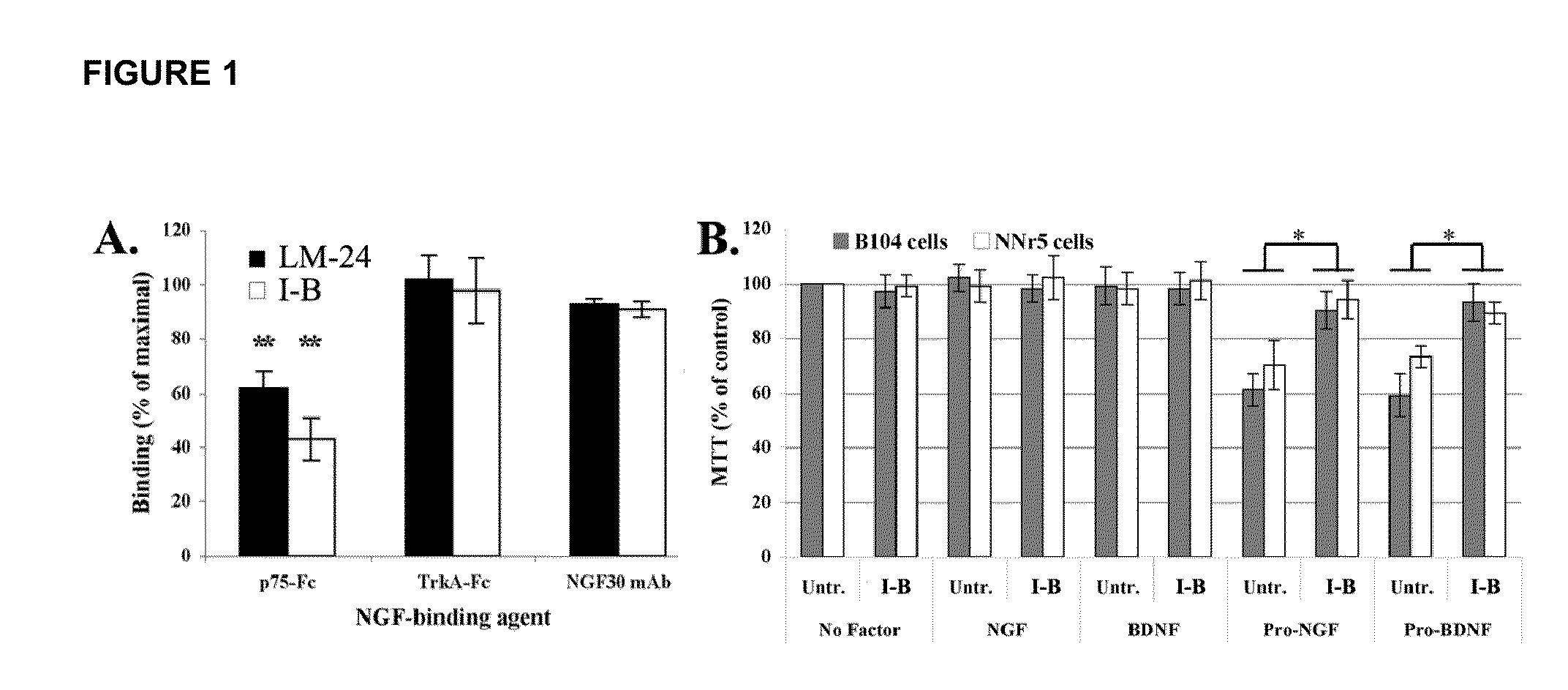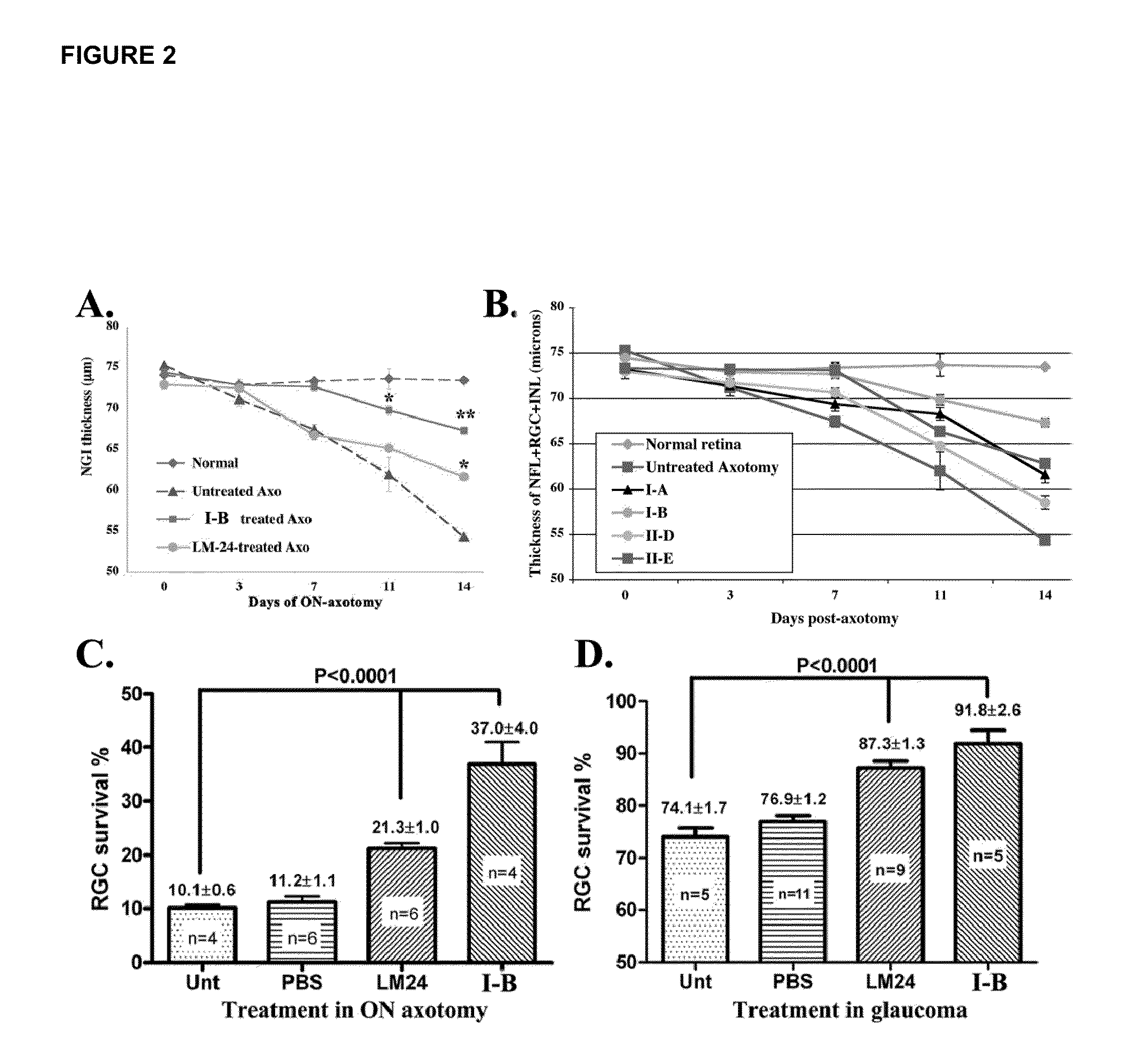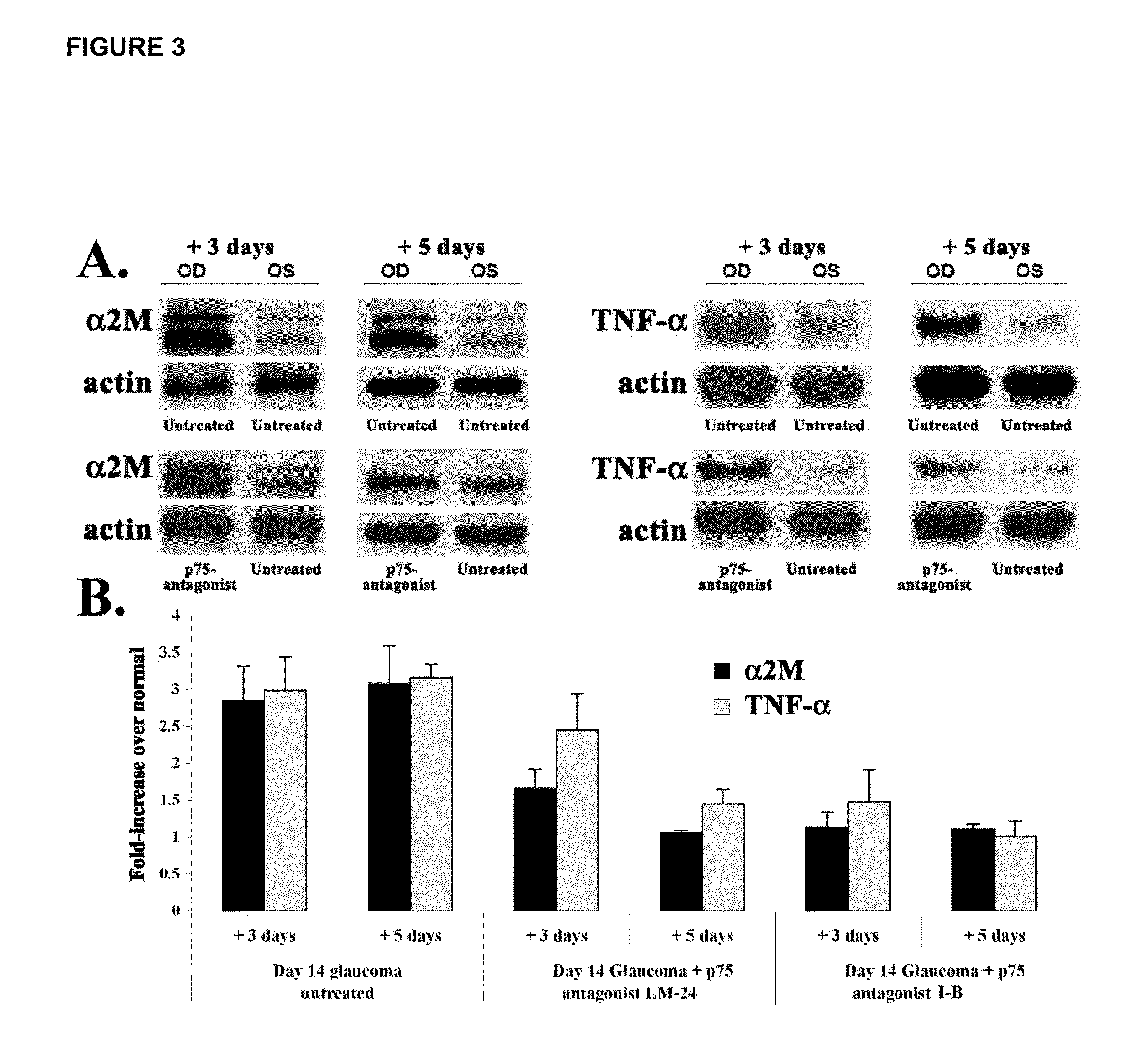Inhibitors of p75 receptor and their uses
a technology of p75 receptor and antagonists, which is applied in the direction of biocide, plant growth regulators, animal husbandry, etc., to achieve the effect of preventing the death of hair follicles
- Summary
- Abstract
- Description
- Claims
- Application Information
AI Technical Summary
Benefits of technology
Problems solved by technology
Method used
Image
Examples
synthetic example 1
Synthesis of Th53 (I-A)
2-(1,3-dimethyl-2,6-dioxo-2,3-dihydro-1H-purin-7(6H)-yl)-N-(4,4,4-trifluorobutyl)acetamide
[0117]1 mmol from theophylline-7-acetic acid (238 mg) and 4,4,4-trifluorobutan-1-amine (127 mg) was dissolved in 3 ml of DMSO. An equimolar amount of N,N′-dicyclohexylcarbodiimide (206 mg) was added and the solution was stirred for 48 h at ambient temperature. The solvent was filtered and concentrated under high vacuum. The oily residue, dissolved in minimal amount of ethyl acetate was subjected to flash chromatography. The following eluents were used: ethyl acetate:petroleum ether (2:1), ethyl acetate and ethyl acetate:methanol (9:1). The fractions containing the new spot (Rf=0.07, TLC, ethyl acetate) were collected and evaporated. The white powder was recrystallized from ethyl acetate / petroleum ether.
[0118]M.p. 181-184° C. Yield: 69 mg (20%). The molecular mass of the product was analyzed by LC / MS (Agilent) and was found to be 348 (M+H)+, thus confirming the suggested s...
synthetic example 2
Synthesis of Th69 (I-B)
1,3-Diisopropyl-1-[2-(1,3-dimethyl-2,6-dioxo-1,2,3,6-tetrahydro-purin-7-yl)-acetyl]-urea (ThAc-N-DIU) was synthesized as follows
[0119]A solution of 119 mg (0.5 mmol) theophylline-7-acetic acid in 5 ml DMF was dropped for 15-20 minutes into pre-heated at 60° C. solution of 80 μl N,N′-diisopropyl carbodiimide (DIC) in 2.5 ml DMF. The mixture was subsequently heated for 4 hours at the same temperature. After cooling the solvent was evaporated in a vacuum. The residue was dissolved in minimal amount of chloroform and purified by flash chromatography on Silicagel-60A with chloroform:methanol (98:2) as eluent. The fractions with the desired product were pooled and evaporated, yielding 82 mg (44%) from the compound Th69 as a white powder. Rf=0.68 (chloroform / methanol (9 / 1), Rf=0.23 (ethyl acetate). The empirical formula (F.W. 365) was confirmed by the results from LC / MS. The main molecular peak was found at 365 with a second peak at 387 for the sodium salt. The m.p. ...
synthetic example 3
Synthesis of Th60 (II-D)
3′-Aminopropyl (1,3-dimethyl-2,6-dioxo-2,3-dihydro-1H-purin-7(6H)-yl)acetate was synthesized as follows
[0120]To 60 mg of Th56 dissolved in 7 ml of methanol was added 30 mg of Palladium 10% on activated carbon suspended in 7 ml of the same solvent. The mixture was stirred for 3 hours at room temperature under hydrogen. The suspension was filtered over Celite, washed with methanol and evaporated. The purification was performed with flash column chromatography using chloroform and methanol with increasing polarity. The fractions containing the second spot (Rf=0.32, C / M=7 / 1) were pooled and evaporated.
PUM
| Property | Measurement | Unit |
|---|---|---|
| Composition | aaaaa | aaaaa |
| Structure | aaaaa | aaaaa |
| Pharmaceutically acceptable | aaaaa | aaaaa |
Abstract
Description
Claims
Application Information
 Login to View More
Login to View More - R&D
- Intellectual Property
- Life Sciences
- Materials
- Tech Scout
- Unparalleled Data Quality
- Higher Quality Content
- 60% Fewer Hallucinations
Browse by: Latest US Patents, China's latest patents, Technical Efficacy Thesaurus, Application Domain, Technology Topic, Popular Technical Reports.
© 2025 PatSnap. All rights reserved.Legal|Privacy policy|Modern Slavery Act Transparency Statement|Sitemap|About US| Contact US: help@patsnap.com



